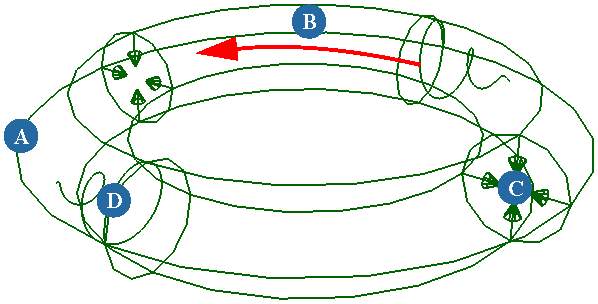To create a toric control object: Choose Get  Force
Force  Toric from the Simulate toolbar, Get
Toric from the Simulate toolbar, Get  Primitive
Primitive  Control Object
Control Object  Toric from the other toolbars, or Create
Toric from the other toolbars, or Create  Force
Force  Toric from the Hair toolbar.
Toric from the Hair toolbar.
To redisplay this property editor: Select the toric object and press Enter.
The toric force is a donut-shaped force that simulates the effect of a vacuum or local turbulence by creating a vortex force field inside the torus. Anything that is inside the torus is affected by the force. This force is useful for making billowing effects in smoke simulations (especially when used in conjunction with the drag force) or having ICE particles or rigid bodies "sucked" through a tube to follow a path (if the torus is open-ended).
The toric force has no effect on Soft body or Cloth simulations.
For more information on forces in general, see Forces [ Simulation and Effects].
To use this force in an ICE tree, see Creating and Applying ICE Forces to ICE Simulations [ICE Guide].

See the parameters in the table below that match the letters in this image.
The rate of linear motion at which the simulated objects pass through a medium.
 Except where otherwise noted, this work is licensed under a Creative Commons Attribution-NonCommercial-ShareAlike 3.0 Unported License
Except where otherwise noted, this work is licensed under a Creative Commons Attribution-NonCommercial-ShareAlike 3.0 Unported License